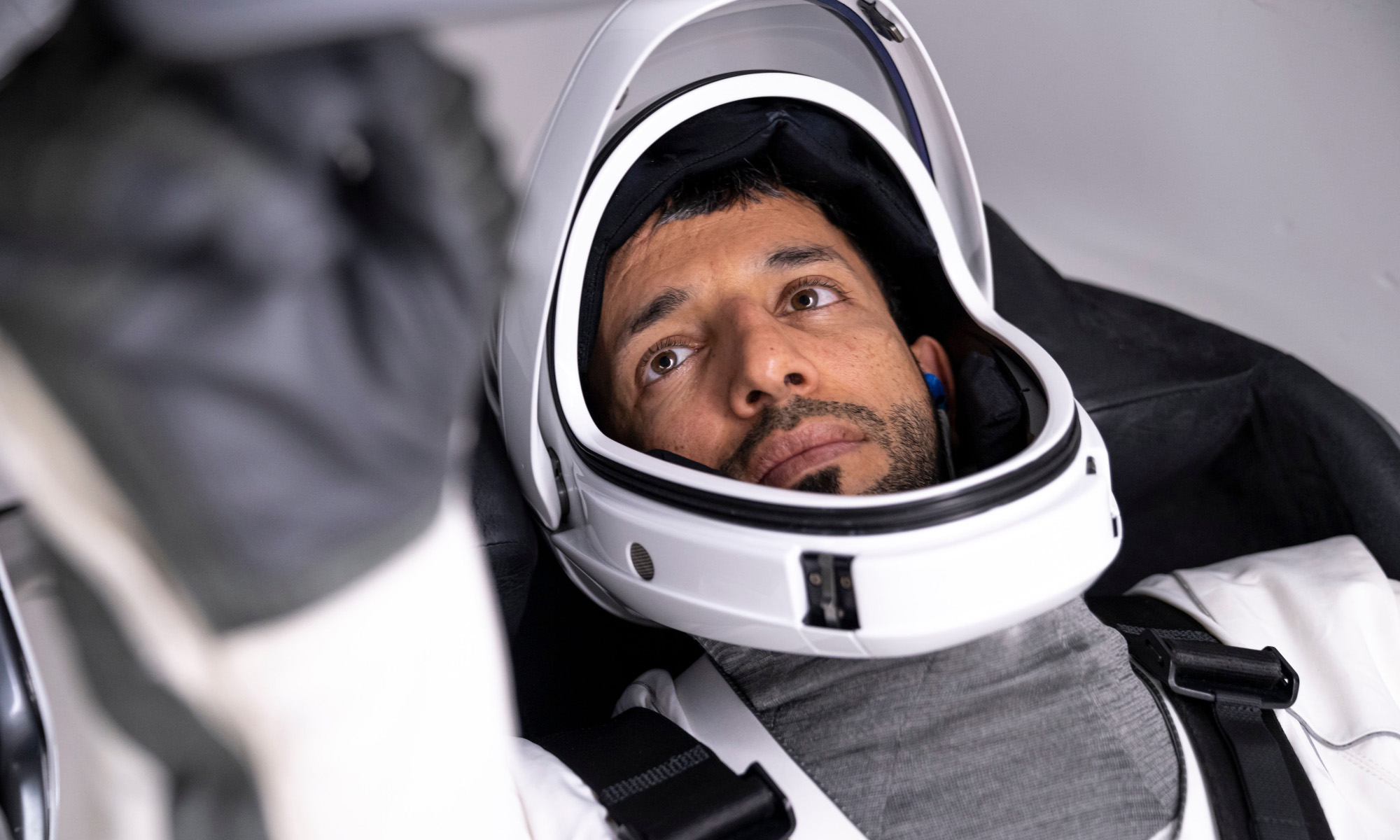News
Sultan Al Neyadi Becomes The First Ever Arab To Spacewalk
The astronaut is on a 6-month mission aboard the International Space Station, orbiting 400 km above Earth.

At 17:41 GST on April 28, Sultan Al Neyadi entered the record books as the first Arab to walk in space. Al Neyadi, who arrived at the International Space Station on March 3 as part of a six-month mission, conducted a 6.5-hour spacewalk with American astronaut Stephen Bowen to carry out maintenance tasks and prepare for a solar array installation.
بعد ٣ سنوات من التدريب المكثف .. رأينا اليوم سلطان النيادي في أول مهمة للسير في الفضاء الخارجي.. وتنفيذ مهمات لتركيب أجزاء جديدة وإجراء صيانة في محطة الفضاء الدولية .. أول إماراتي .. أول عربي .. أول مسلم .. يسير في الفضاء الخارجي .. فخورين بذلك .
يقولون بأن ثلثي نجوم السماء… pic.twitter.com/acxJvVGNDy— HH Sheikh Mohammed (@HHShkMohd) April 28, 2023
UAE President and ruler of Dubai, Sheikh Mohamed bin Rashid, was quick to tweet about Al Neyadi’s achievement: “With this week’s discoveries by the Hope probe, the achievements of the Rashid rover mission, and Sultan Al Neyadi’s first-ever spacewalk by an Arab astronaut, the UAE continues to make a meaningful contribution to space exploration and advancements in science”.
Also Read: Emirates Just Unveiled The World’s First Robot Check-In Assistant
Sheikh Mohamed bin Rashid noted that the astronaut was both the first Arab and first Muslim to walk in space before tweeting some inspiring words to his followers: “Arabs are capable… Arabs are coming… Arabs are creative if we decide to focus on science and invest in youth”.
News
Google Releases Veo 2 AI Video Tool To MENA Users
The state-of-the-art video generation model is now available in Gemini, offering realistic AI-generated videos with better physics, motion, and detail.

Starting today, users of Gemini Advanced in the MENA region — and globally — can tap into Veo 2, Google’s next-generation video model.
Originally unveiled in 2024, Veo 2 has now been fully integrated into Gemini, supporting multiple languages including Arabic and English. The rollout now brings Google’s most advanced video AI directly into the hands of everyday users.
Veo 2 builds on the foundations of its predecessor with a more sophisticated understanding of the physical world. It’s designed to produce high-fidelity video content with cinematic detail, realistic motion, and greater visual consistency across a wide range of subjects and styles. Whether recreating natural landscapes, human interactions, or stylized environments, the model is capable of interpreting and translating written prompts into eight-second 720p videos that feel almost handcrafted.
Users can generate content directly through the Gemini platform — either via the web or mobile apps. The experience is pretty straightforward: users enter a text-based prompt, and Veo 2 returns a video in 16:9 landscape format, delivered as an MP4 file. These aren’t just generic clips — they can reflect creative, abstract, or highly specific scenarios, making the tool especially useful for content creators, marketers, or anyone experimenting with visual storytelling.
Also Read: Getting Started With Google Gemini: A Beginner’s Guide
To ensure transparency, each video is embedded with SynthID — a digital watermark developed by Google’s DeepMind. The watermark is invisible to the human eye but persists across editing, compression, and sharing. It identifies the video as AI-generated, addressing concerns around misinformation and media authenticity.
While Veo 2 is still in its early phases of public rollout, the technology is part of a broader push by Google to democratize advanced AI tools. With text-to-image, code generation, and now video creation integrated into Gemini, Google is positioning the platform as a full-spectrum creative assistant.
Access to Veo 2 starts today and will continue expanding in the coming weeks. Interested users can try it out at gemini.google.com or through the Gemini app on Android and iOS.





















